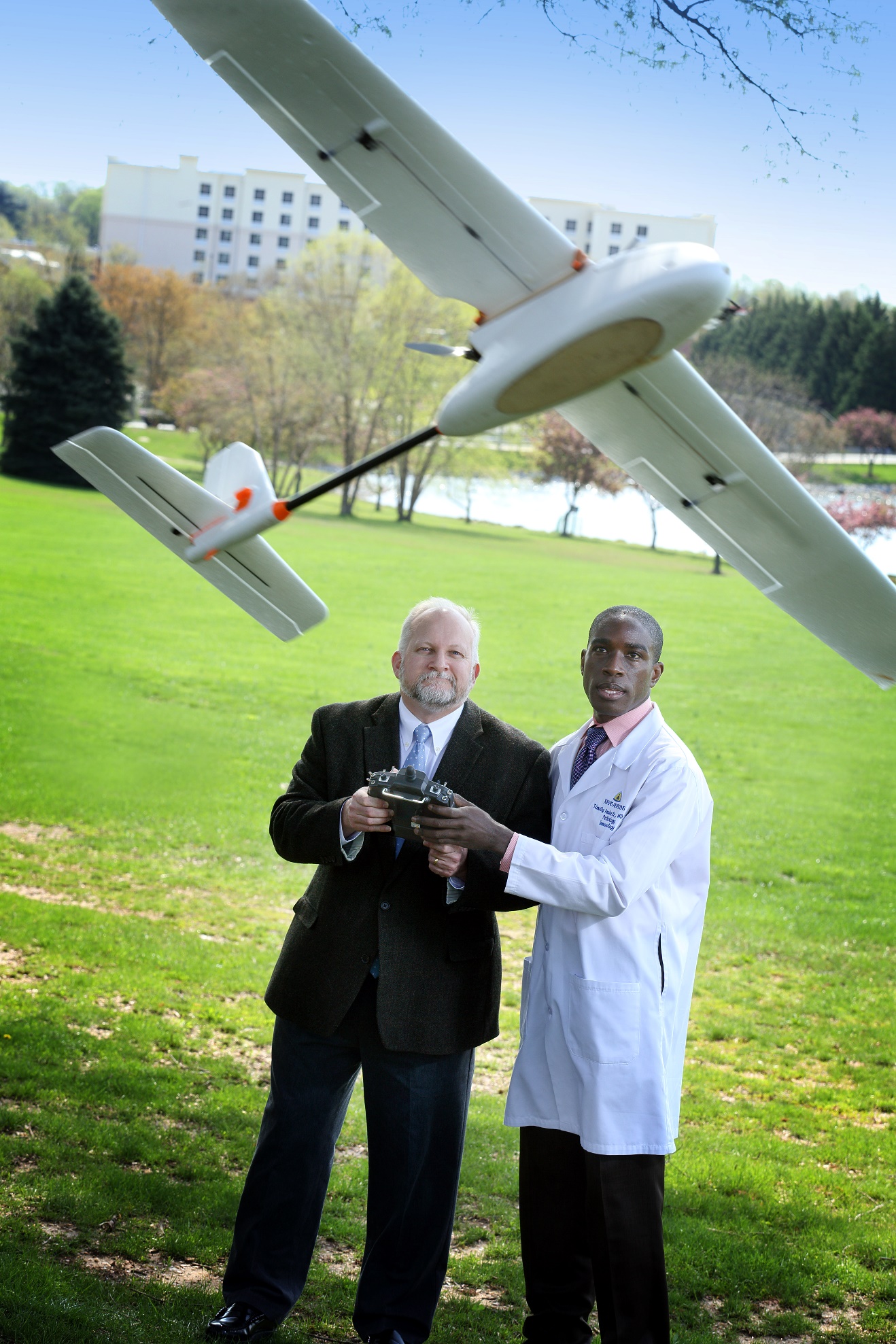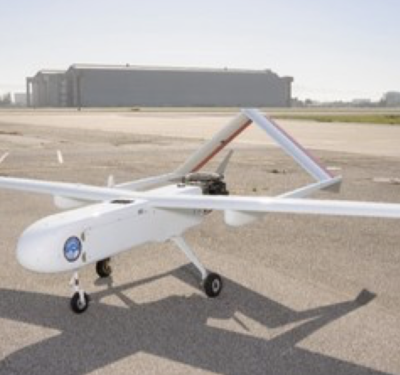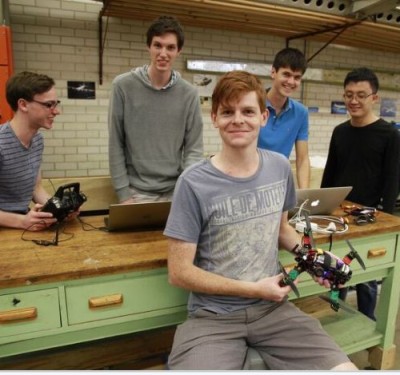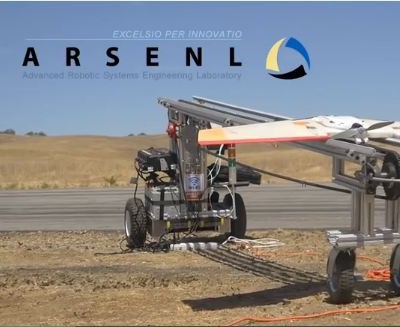
Pathologist Timothy Amukele teamed with Robert Chalmers and other engineers to create a drone courier system that transports blood to diagnostic laboratories. Johns Hopkins Medicine
Someday, unmanned aircraft systems could be used to routinely transport blood to remote hospitals.
Johns Hopkins researchers completed a study to test this concept in 2014. They set out to demonstrate that medical samples flown via drones have the same results as samples transported other ways, such as by car or manned aircraft, said Jeff Street, one of the study’s five authors.
When they compared the results, they found there was no difference in the samples that were flown on the drone and the samples that were not.
The study was recently published in the journal PLOS One, and Street said using drones to transport blood and other medical samples can help people in remote places who don’t have access to modern medical facilities.
During the study, 56 volunteers donated blood at John Hopkins Hospital, Street said. Three paired samples were collected from each volunteer, for a total of 336 samples, according to the study—two tubes each for chemistry, hematology, and coagulation testing respectively. Of those, 168 samples were driven to the flight field and held stationary, while the remaining 168 samples were flown on the UAS. Flight times ranged from six to 38 minutes.
When the samples arrived at the hospital, 33 of the most common chemistry, hematology, and coagulation tests were completed, according to the study. To evaluate the results, “statistical methods as well as performance criteria from four distinct clinical, academic, and regulatory bodies were used.”
The results were nearly identical for both sets of samples, with length of flight not affecting the results at all.
The study was a success, Street said, and demonstrates that drones are a viable way to transfer medical samples.
“The use case we had in mind was providing people who live in communities without access to modern medicine facilities with the ability to have medical tests performed,” said Street, who flew the UAS and helped plan flight operations. “For example, people who live in a community where the roads are washed out during the rainy season or people who are separated from a medical facility by large changes in altitude. You can simply fly a drone across the valley, where other methods might take days.”
UAS can also be used to transport samples in large cities where traffic is an issue, Street said.
The team used the Aero from 3D Robotics, a small fixed-wing aircraft with a 2 meter wingspan, for the research flights, Street said. The Aero has an average flight time of 40 minutes. While researchers would like to conduct more tests using drones to transport blood and other medical samples in the future, they don’t have any planned at this time.
Watch this video to learn more:
Can Drones be Used for the Routine Transport of Laboratory Specimens? from Medical Drones on Vimeo.






